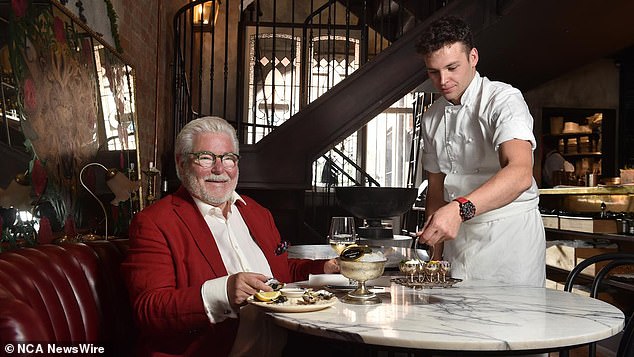CreditorWatch issues grim warning for Australia’s hospitality sector
One in 13 Australian hospitality businesses face bankruptcy in the next 12 months as discretionary spending dries up.
Australian credit reporting agency CreditorWatch has found that 7.45 percent of food and beverage companies are expected to go bankrupt in the next 12 months.
Inter-company defaults have soared to a record high as the industry’s pain during the pandemic appears to have caused it.
Patrick Coghlan, CEO of CreditorWatch, said the unfortunate fact is that conditions for businesses in the hospitality sector will get worse before they get better.
One in thirteen Australian hospitality businesses will face bankruptcy in the next twelve months
“The outlook for hospitality businesses is unlikely to improve until we see an increase in consumer spending,” Mr Coghlan said.
‘And that will only happen when the consequences of one or two interest rate cuts reach households. We expect this will only be felt in the second half of next year.’
In their latest findings, CreditorWatch found that low cash reserves among small businesses supported the bleak outlook.
But large hospitality companies such as hotel groups had the lowest bankruptcy rate of any major company in any sector, ahead of companies with revenues of more than $50 million in transportation, retail, wholesale and agriculture.
CreditorWatch’s April Business Risk Index report shows that trade between companies is very tight.
Defaults are at a record high – up 69.4 percent year-on-year – as businesses struggle to pay their invoices.
CreditorWatch’s research found that if a company defaults on a payment, it has a 20 percent chance of going bankrupt within a year.
The outlook is for continued difficult operating conditions at least until mid-2025, when lower interest rates should ‘finally’ provide some relief for Australian households.

It is expected that any interest rate cuts will not free up much spending until mid-2025.
The upcoming $300 energy rebate for every household “will be enough to convince consumers to open their wallets in a big way.”
The safest CBDs for insolvency risk – with more than 5,000 businesses – are Norwood/Payneham/St Peters in South Australia, Unley and immediate neighbor Adelaide City. Townsville and Toowoomba, in Queensland, round out the top five.
Four of the five CBDs with the highest insolvency risk are in New South Wales, including Bringelly/Green Valley, Merrylands/Guildford, Canterbury and Auburn.
Ormeau/Oxford in Queensland took fourth place.
Those ‘safest’ CBDs have a higher proportion of older businesses and older residents.
Anneke Thompson, chief economist at CreditorWatch, said “very weak” consumer spending was noticeably hurting customer-facing businesses, especially those that are among the smaller businesses.
‘Although Australia is far from a technical recession, and the Treasury continues to forecast positive, if weak, GDP growth for the three-year outlook, business conditions for most businesses that rely on consumer spending will remain in recession experienced, particularly for businesses based in ‘mortgage belt’ areas of our capital cities,” Ms Thompson said.

Restaurants in areas with older businesses and older residents will do better economically in the short to medium term
